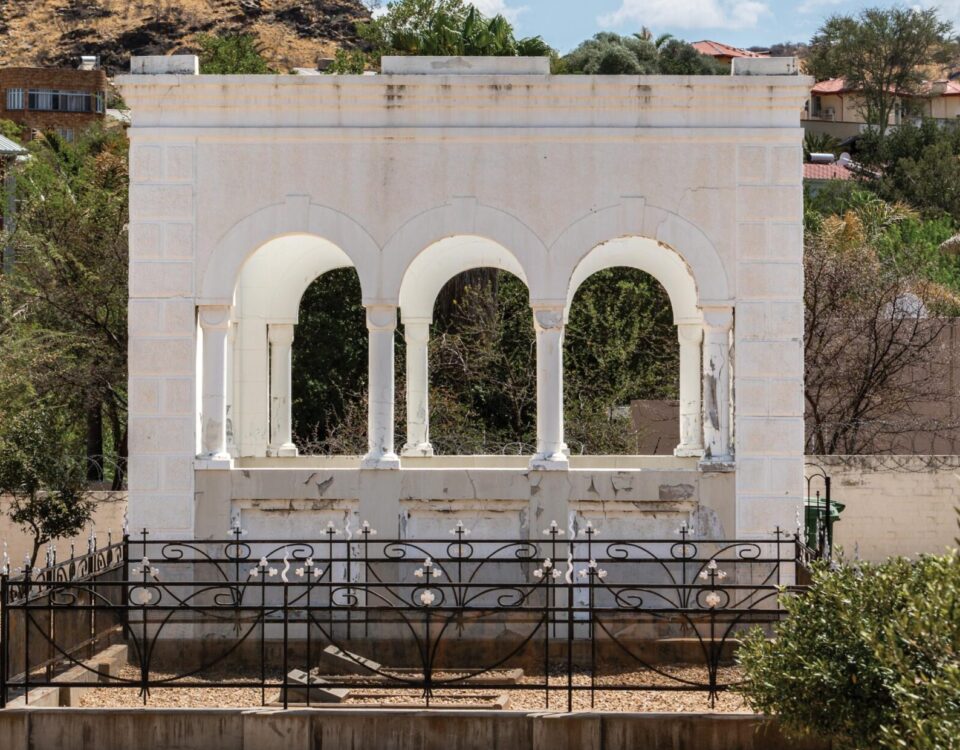TOSCO Trust launched – assisting human/wildlife conflict
June 5, 2012Conservation initiatives in the central Namib
June 5, 2012The Anmire Cultural Village is a community-based tourism enterprise that is locally owned and managed by the Khowarib community. Profits from the enterprise go to members of the community, to encourage them to care for and utilise their natural resources responsibly.
Anmire, a Damara word meaning “form your own opinion”, is the initiative of a local Damara woman, Monica Uses, a life-long resident of the village of Khowarib. Working with members of the Khowarib community, Monica established a cultural village on the banks of the Hoanib River where she could introduce the culture and traditions of the Damara people to interested tourists and the youth in the surroundings.
On a guided tour, visitors to the village are given an insight into the traditional and contemporary lifestyles of the Damara people. They gain first-hand knowledge of Damara houses and foods, songs and dance, medicines and rituals, traditional fire-making, rituals of the hunt, rites of passage, and so on.
Historical background
The Damara people are one of the oldest ethnic groups in Namibia. From the Ugab to the Huab River, from Palmwag to Sesfontein, the Damara walked the earth throughout the year in search of food and water, guided by the seasons and following the wildlife. Their history is largely unrecorded, but the old people of Khowarib tell stories of the time when their parents and grandparents lived only from the land and natural resources such as game.
Traditionally a hunter-gatherer society, the Damara owned no livestock and maintained only small gardens. They relied on wildlife such as springbok and gemsbok for meat, and utilised a great variety of local plants for food and medicine. They were entirely self-sufficient, relying on their traditional healer for his medicines and holy fire to help them in times of illness.
The arrival of the Topnaar Namas, German settlers and missionaries in the Khowarib environs was a time of great change for the Damara people. Under the influence of these other societies, many of the Damaras’ traditional ways became lost. Today they live a sedentary lifestyle, herding goats and cattle, and farming crops. They are increasingly accepting modern values and ways of life, and the knowledge handed down from generation to generation by the old healers is gradually becoming lost.
The community of Khowarib hopes that the establishment of the Anmire Cultural Village will contribute to the preservation of the Damaras’ cultural heritage and traditional knowledge for the community, their children, their wild animals and the land that they share with others.
The village
Anmire is located on the Hoanib River bank about 80 km north of Palmwag. A signboard on the left side of the road at Khowarib indicates the turnoff. It can also be accessed from Sesfontein, another 35 km to the north.
The village consists of the Stone House (/ûi-oms), Bark House (//hIu-oms), Reed House (/haru-oms), Pole House (Hai-oms), Women’s House (!khae-oms), Medicine House (Soloân-oms) and the office and reception structure. Demonstrations are given by locals illustrating various cultural traditions, such as the Healing Dance, the Hunting Dance and the Stone Game.
This article appeared in the 2001 edition of Conservation and the Environment in Namibia.

